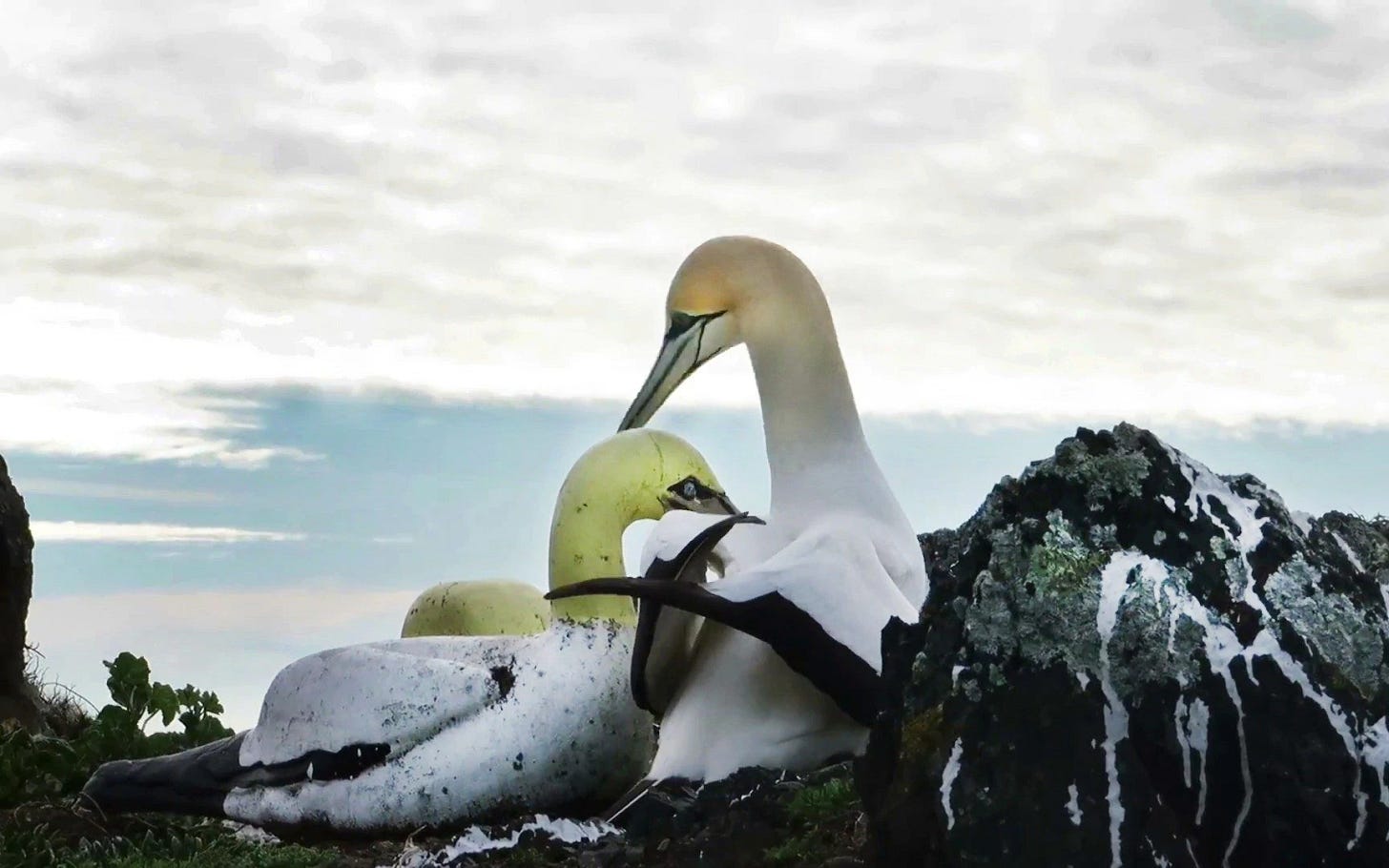You'll never be alone again
A bird that's been dead since 2018 reminds me of intimacy on the internet

A defining feature of the internet is immediacy, but I wonder sometimes if what we’re actually experiencing is the collapse of time. Breaking and archaic information is presented on the same flat plane of whatever feed you’re scrolling through; a tweet about this war includes photos from two wars ago; a meme resurfaces every six months, with a slightly different take, or not—don’t you hate it when the spinach wilts in your fridge? — forever. The phrase “terminally online” works so well because the terminability is attached to the user, like, the internet will finish you before you finish it. Scrolling feels endless, because it is endless: No chronology, no conclusions. Right here, reading this, you’re a raindrop in an ocean of collective consciousness.
And so, like an ocean regurgitating microplastics onto the sand, today Twitter offered me a Washington Post article from February of 2018 titled “Nigel, the world’s loneliest bird, dies next to the concrete decoy he loved.”
Nigel is a gannet, which apparently is a large white seabird with blue eyes, a powdery yellow head and black-tipped wings. He lived on a desolate mass off the coast of New Zealand called Mana Island. In 2015, scientists planted a sort of Potemkin aviary in order to create a gannet colony on the island after 40 birdless years: They constructed a brood of concrete gannet decoys, and “broadcast the sound of the species calls.” (Imagine, for a moment, the eeriness of 80 dead-eyed bird mannequins, and the crackling sounds of bird calls over a P.A. system. If I were a development executive making movies for birds, I would pitch this as The Lighthouse meets Ex Machina.)
Nigel followed that siren song, and settled on Mana Island. He was the only one. From the Washington Post:
In the absence of a living love interest, Nigel became enamored with one of the 80 faux birds. He built her — it? — a nest. He groomed her “chilly, concrete feathers . . . year after year after year,” the Guardian reported. He died next to her in that unrequited love nest, the vibrant orange-yellow plumage of his head contrasting, as ever, with the weathered, lemony paint of hers.
This is what makes Nigel the loneliest bird in the world—not that he was alone, but that he thought he wasn’t.
I sleep with my phone next to my face. I don’t know you, but I want you to like me.
Nigel’s solitude drew attention from media outlets and on social media; he was popular on the conservationist Facebook Group Friends of Mana Island (though apparently they also nicknamed him “no mates,” which is rude). He was mourned across the internet when he died. By most standards of value, Nigel mattered. But I think it’s interesting that even alive, Nigel couldn’t have comprehended his fandom. We pitied him when he woo’d a decoy, as if our parasocial care was any realer.
The unexpected deep dive into a gannet’s ghost raised a lot of internal muck around social media for me. I keep doing this thing where I post a photo of myself, or my cats, or whatever, and then spend the next 5-30 minutes in a panic about how boring the photo was. Does a blue check convey some level of quality control? Am I betraying and disgusting my “audience” with my bad lighting, or my ugly toothpaste on the counter in the bathroom selfie, or my mundane thoughts about the meaning of content? And then I delete the photo and ricochet into faceless productivity, launching content into the void, avoiding the comments section, curtailing my shares to fit my “brand.” Sometimes I’m Nigel. Sometimes I’m the concrete bird.
The month before Nigel died, conservation officials tweaked their birdcall broadcast system. The new call worked. Three gannets nested on Mana Island. Nigel was an important part of this migration— his presence likely signaled to the new birds that the island was safe and habitable. In his obituary, Washington Post calls him a pioneer. Maybe Nigel’s loneliness was the loneliness of the brave. Or maybe our desire to follow and explore and tweet about this bird’s loneliness says more about us than him. Did Nigel know he was lonely? Maybe, like with the bird call, he was just drawn to a different frequency. When the new gannets landed, scientists were thrilled about the possibility of breeding. Nigel, however, ignored them. To his death, he preferred the concrete colony.




wow - this gave me all the feels. poignant and leaving me with so much to turn around in my noggin. ty